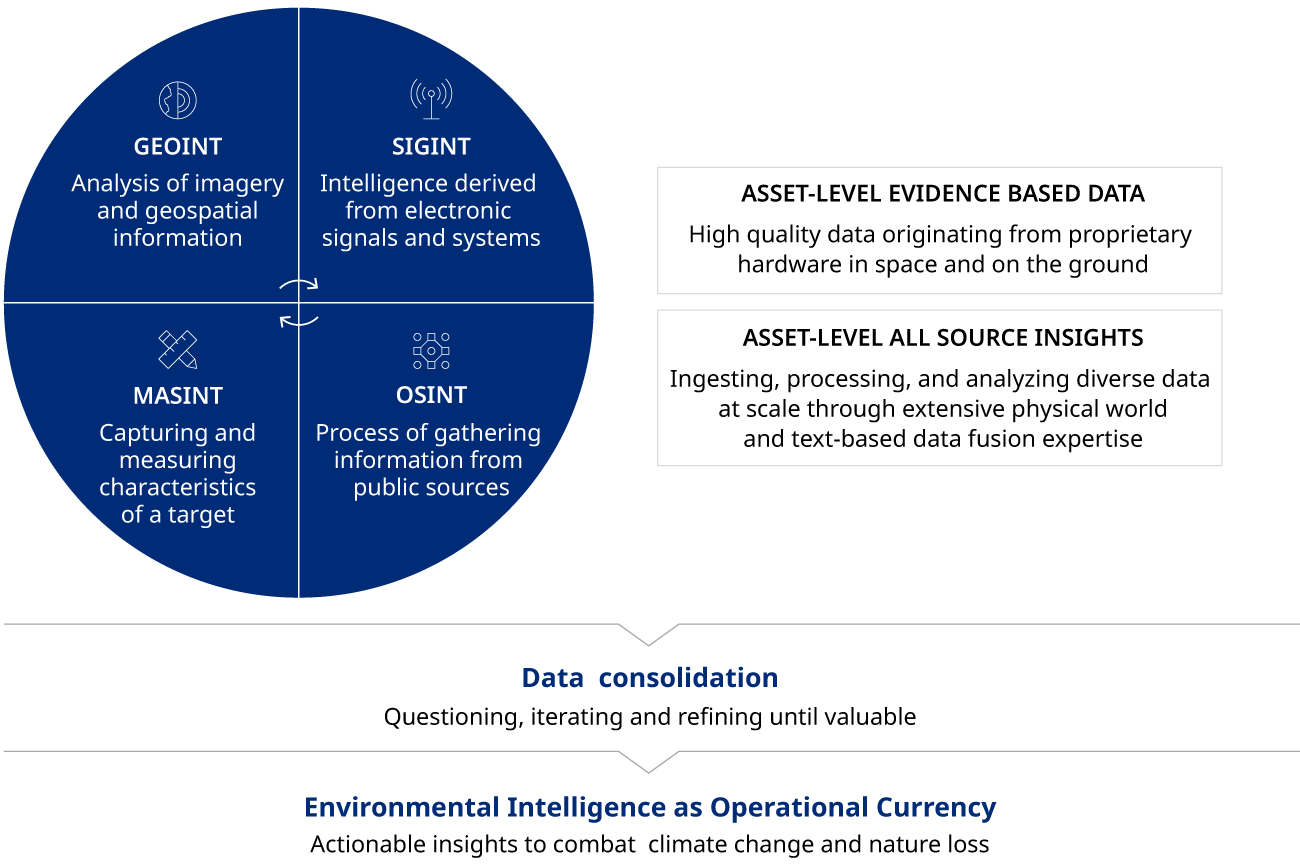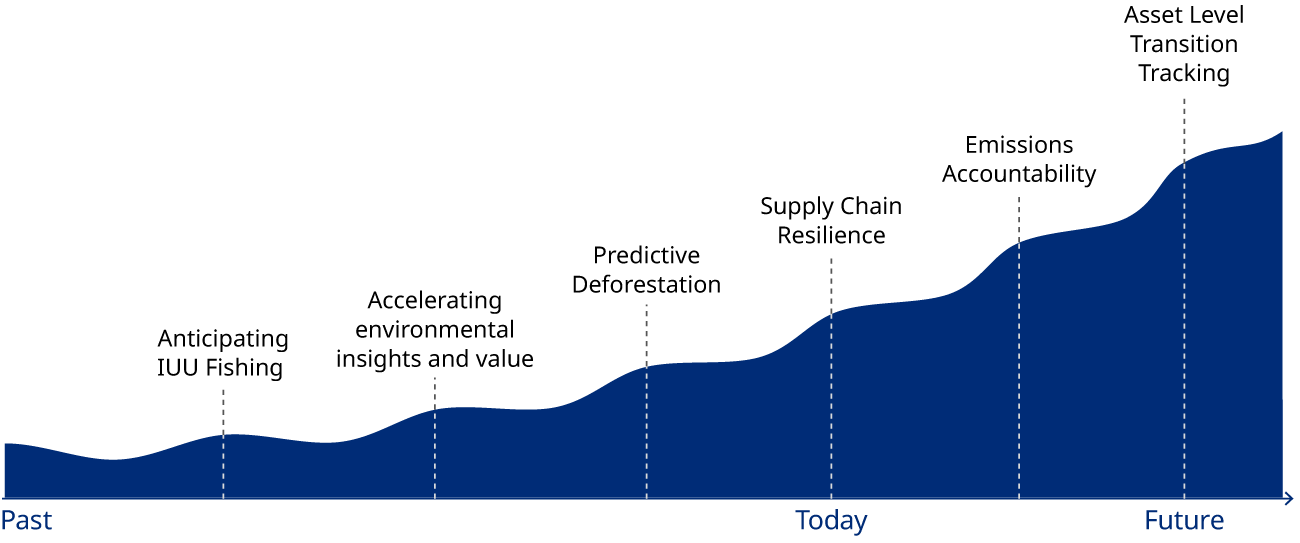The global economy faces a massive challenge over the next six years: To reach net zero by 2050 requires industries to halve their emissions by 2030. It will also necessitate halting and starting to reverse the loss of nature, which means protecting clean water, stopping deforestation, and protecting the nearly one million species threatened with extinction.
One key to reaching net zero on time is developing a much more consistently reliable profile of the planet’s emissions. That would involve understanding the source of emissions in a location- and activity-specific way and the impact of efforts to reduce them.
The good news — and there’s not a lot on the climate front — is the unprecedented transparency various artificial intelligence tools and satellites can provide companies and governments. Working on a suite of Environmental Intelligence solutions enabled by satellite-based remote sensing and artificial intelligence (AI), we borrowed techniques already used by the military intelligence community and financial traders to attempt deep-dives of the corporate and institutional landscapes.
The new environmental intelligence currency
The key to success for this exercise was the creation of a new market currency — reliable data of sufficient quality and richness to inform reliably the millions of high-value decisions required to achieve a climate-resilient, zero-emissions world.

This environmental intelligence must be unimpeachable and interpretable by humans and machines at scale. It must meet certain criteria:
• Accurate, using empirical approaches that emphasize reliable and consistent observations over assumptions
• Precise and on a micro-scale, highlighting greenhouse gas (GHG) emissions and environmental impacts on individual physical assets as well as enabling targeted action
• Comprehensive, covering a range of indicators, including emissions, physical risk factors, and nature-related impacts consistently over time across multiple sectors and geographies
• Attributable, identifying the connections between the environmental impacts of a physical asset and its owner
• Timely, monitoring impacts in near real-time rather than understanding them in retrospect
• Connected, integrating different data sources to increase dramatically the scope of analysis and generate more actionable insights
• Global, reflecting the planetwide, net zero challenge and the need for insights and action on a worldwide scale
Borrowing from the intel community
To get there requires using all the tools in the kit. For instance, remote sensing and machine learning (ML) dramatically increase the quantities and types of data that can be captured and processed, but human expertise and advanced analytical techniques developed by the intelligence community are vital to ensure the results are informative and incisive.
Disciplines, such as open-source intelligence and geospatial intelligence, provide established methods to design and refine data into actionable intelligence. Combining new kinds of data with advanced analytical techniques creates a compounding effect that delivers the potential to produce exponential environmental gains. For companies, such environmental intelligence can provide a complete understanding of how their value chain impacts the environment, from point sources of emissions and pollution to drivers of deforestation and water use. It will also create profiles of where vulnerabilities to climate-related disruptions lie.

The decarbonization challenge is monumental, requiring trillions of investment dollars annually for new infrastructure and technology development. But transitioning to a net zero, climate-resilient future is both an existential necessity and a huge opportunity — whether it be through the commercialization of new, low-carbon technologies or making currently fragile, global supply chains more resilient. Companies and financial institutions better able to quantify environmental risks and reliably align transition objectives and business models will have a distinct advantage.
This report was published in collaboration with BAE Systems.


